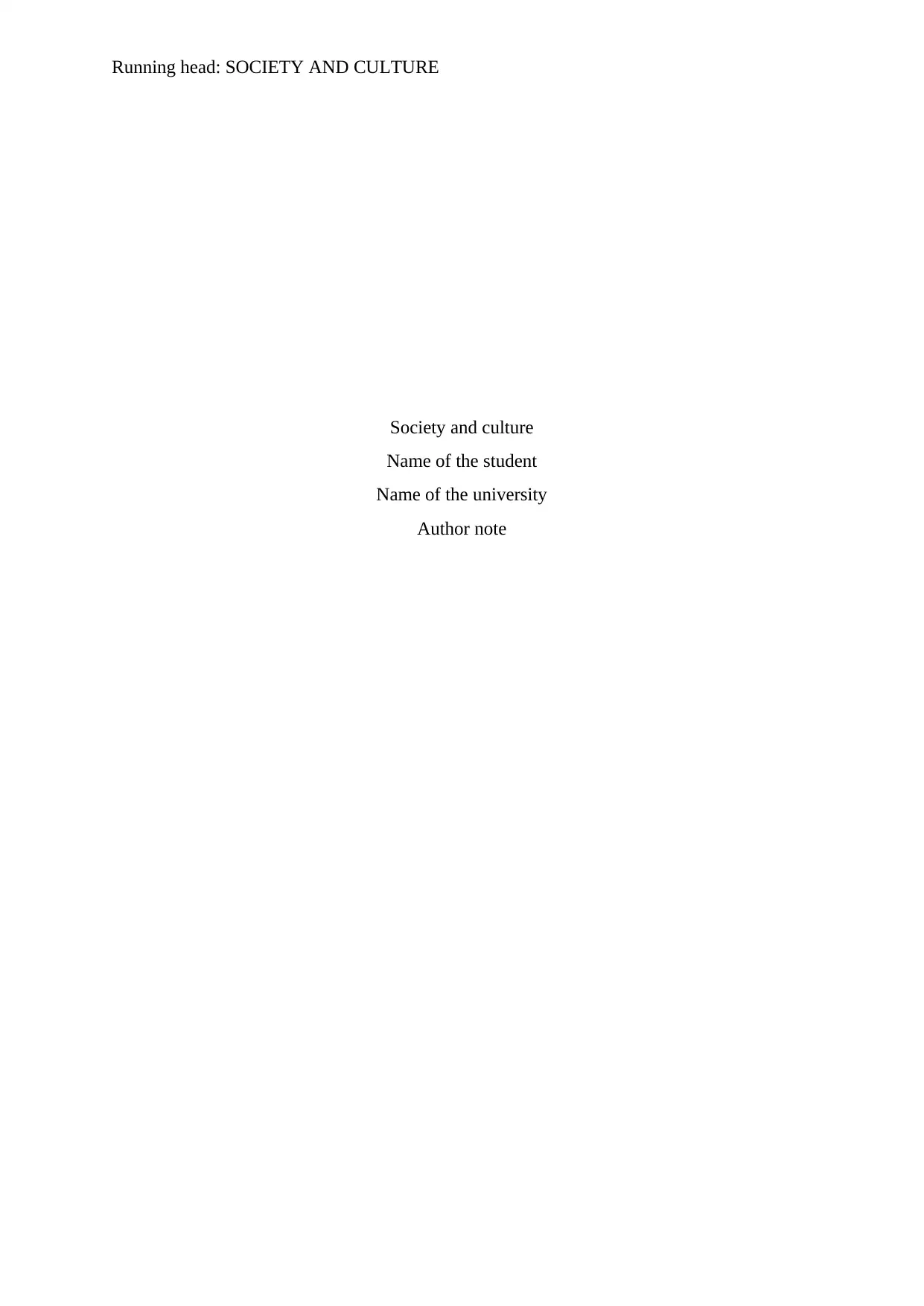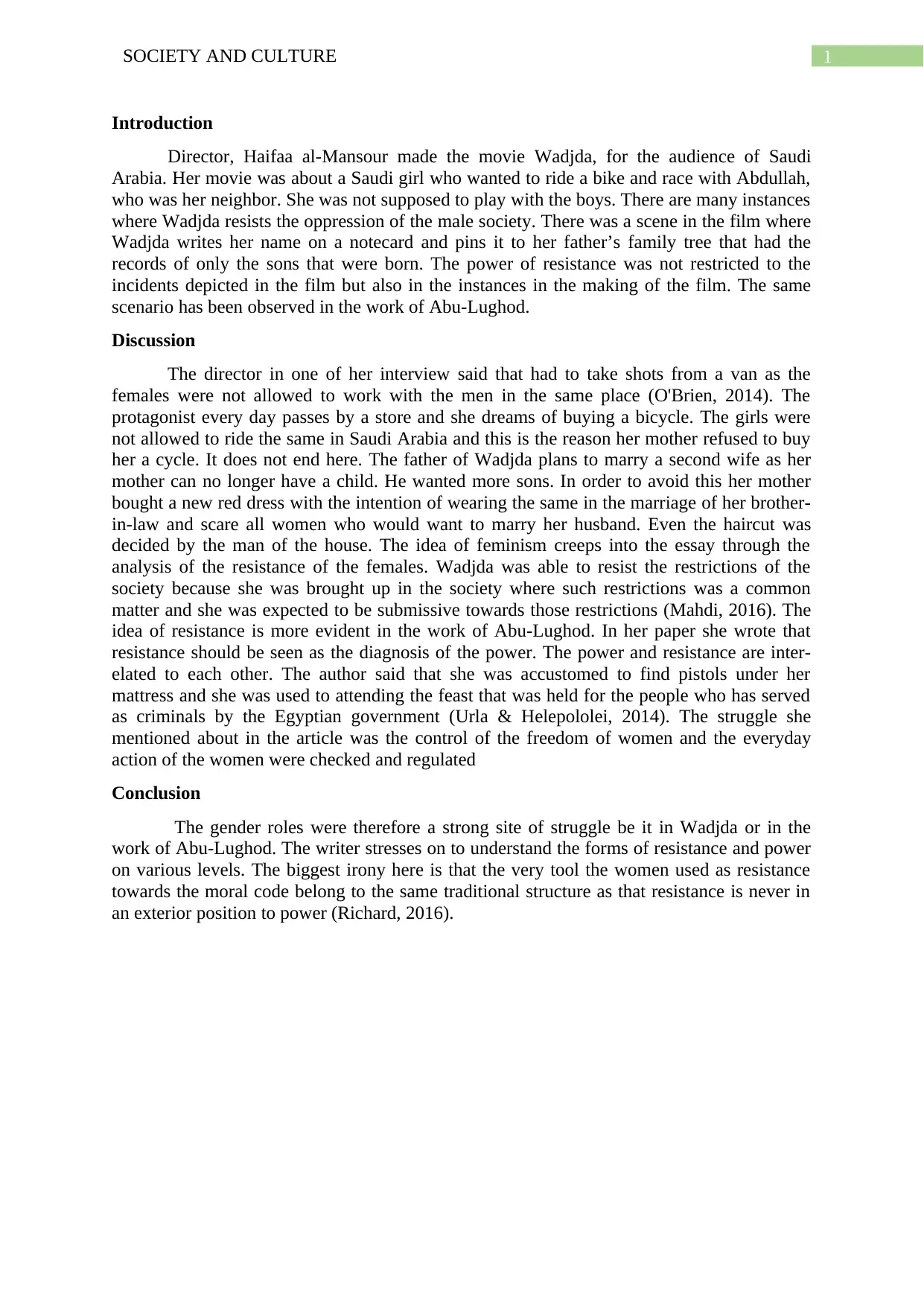ANT 261-503: Resistance in Film and Text - Wadjda and Abu-Lughod
VerifiedAdded on 2023/06/12
|3
|698
|496
Essay
AI Summary
This essay explores the theme of resistance in the context of the film 'Wadjda' and Laila Abu-Lughod’s article “The Romance of Resistance,” examining how different forms of resistance manifest and their varying levels of power. The analysis focuses on specific examples from the film, where Wadjda challenges societal norms and expectations, and synthesizes these with Abu-Lughod's perspective on resistance as a diagnosis of power dynamics. The essay discusses Wadjda's ability to resist due to her upbringing within a restrictive society, contrasting it with the struggles and everyday actions of women described by Abu-Lughod. Ultimately, the essay concludes that gender roles are a significant site of struggle, and that the tools women use for resistance are often intertwined with the traditional structures they oppose, highlighting the complex relationship between resistance and power.
1 out of 3










![[object Object]](/_next/static/media/star-bottom.7253800d.svg)